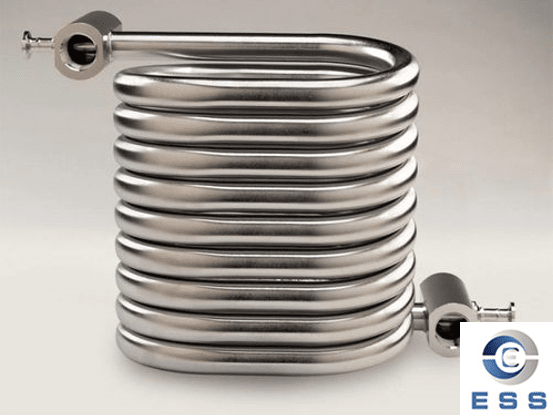
The tube-side fluid resistance of heat
exchanger tube refer to the resistance encountered by the fluid when it
flows in the tube side of the heat exchanger. This resistance mainly includes
friction resistance and local resistance, which will affect the flow state and
heat transfer efficiency of the fluid. The allowable range of tube-side fluid
resistance of heat exchanger tubes is usually between 3~6kPa. This range is
based on the working conditions of the heat exchanger and the physical
properties of the heat medium, ensuring that the heat exchanger can maintain
sufficient safety margin while operating efficiently.
The importance of tube-side fluid
resistance
In the design and operation of heat
exchangers, tube-side fluid resistance is a crucial parameter. It not only
affects the heat transfer efficiency of the heat exchanger, but also directly
affects the uniformity of flow distribution and system energy consumption.
Therefore, reasonable control of tube-side fluid resistance is of great
significance to ensure the performance and safety of the heat exchanger.
Allowable range of tube-side fluid
resistance
Based on engineering practice experience
and scientific research, the allowable range of tube-side fluid resistance of heat
exchanger tubes is usually set between 3~6kPa. This range is determined after
comprehensively considering the working conditions, heat medium properties,
economy and safety of the heat exchanger.
Specifically, if the tube fluid resistance
is too small, it may cause uneven flow distribution in the heat exchanger,
thereby reducing the heat exchange efficiency; if the resistance is too large,
it will increase the energy consumption and operating costs of the system, and
may even cause safety hazards. Therefore, controlling the tube fluid resistance
between 3 and 6 kPa can ensure the safety and economy of the heat exchanger
while ensuring the efficient operation of the heat exchanger.
Factors affecting tube fluid resistance
The size of the tube fluid resistance is
affected by many factors, including flow rate, pipe length and diameter, fluid
viscosity and density, and the condition of the inner wall of the pipe. In
actual engineering applications, it is necessary to accurately calculate and
reasonably adjust the tube fluid resistance according to the specific
conditions of these factors.
For example, when the flow rate increases,
the tube fluid resistance will also increase accordingly; similarly, the longer
the pipe length and the smaller the pipe diameter, the greater the fluid
resistance. In addition, the viscosity and density of the fluid and the
roughness of the inner wall of the pipe will also have a significant impact on
the resistance. Therefore, when designing and operating a heat exchanger, these
factors need to be considered comprehensively to achieve the best heat exchange
effect and energy utilization efficiency.
Summary
In short, the allowable range of fluid
resistance in the heat exchanger tube is an important parameter to ensure
efficient and safe operation of the heat exchanger. By reasonably controlling
this range and comprehensively considering various influencing factors, we can
achieve the optimization of heat exchanger performance and efficient use of
energy.













 Eastern Steel Manufacturing Co.,Ltd not only improve product production and sales services, but also provide additional value-added services. As long as you need, we can complete your specific needs together.
Eastern Steel Manufacturing Co.,Ltd not only improve product production and sales services, but also provide additional value-added services. As long as you need, we can complete your specific needs together.










